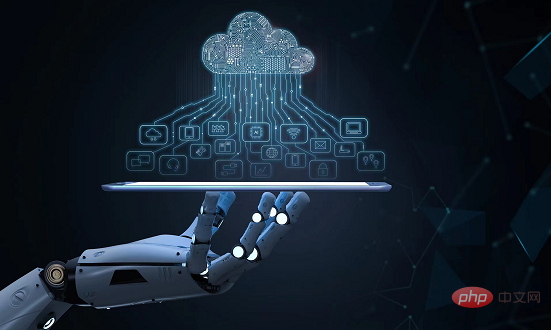Home >Technology peripherals >AI >Five key digital trends driving growth in 2023
Five key digital trends driving growth in 2023
- 王林forward
- 2023-04-12 08:28:021281browse

Today, businesses across industries face significant challenges to ensure they thrive in a challenging work environment and unpredictable economic landscape. Digital technologies will continue to be critical to business operations, branding, talent and customer acquisition, and revenue growth.
The focus in 2022 is on the skills businesses need to succeed in the digital economy and manage global economic instability and supply and demand constraints. To prepare for the next phase of challenges, organizations should adopt the necessary tools and strategies to protect against continued uncertainty and instability.
I think there are multiple trends that will continue this pattern in 2023. Here are the trends that I think will be more focused on and will help organizations deliver value faster and more efficiently.
Five digital trends driving growth in 2023:
1. Adaptive and secure artificial intelligence
With the application of artificial intelligence (AI) and machine learning (ML) Adoption of supported services increases, and enterprises will focus on making these services mainstream. I predict that in 2023 there will be an increased focus on the operability of AI services to comply with security and risk management practices. It is expected that organizations investing heavily in AI practices will see changes in end-user consumption patterns due to the economic slowdown. Building resilient ML methods, such as reinforcement learning, will be key to success. AI practices coupled with strong security measures will be key to preventing harmful decisions. As data sets continue to grow, enterprises will need to simplify and automate their data integrity and governance to prevent data breaches. Static code analysis and dynamic vulnerability assessment of databases should be committed to the organization’s AI development lifecycle. Reflects the security software supply chain that is now becoming mainstream.
2. Data Grid
By switching to a data grid approach, enterprises can securely provide the data their AI and machine learning models require. This offsets the extract, transform, and load (ETL) model and the heavy management processes that have historically been involved in driving data insights. This change enables intelligence to meet the source of data generation, allowing streaming data. The data grid approach changes the dynamics behind customer experience and personalization. This adoption accelerates the ability to deliver enhanced, targeted products and services at the precise time needed. For intelligence to have a significant, quantifiable impact on outcomes, it must be integrated into digital experiences, process automation, and partner experiences. Overall, data grid activities will further penetrate business and application development thanks to projects and initiatives centered on operational, real-time and edge use cases.
3. Sustainability of technology
In response to the rapid growth of cloud computing, organizations are working with service providers to tighten their FinOps strategies. Forecasts show that cloud spending will reach $600 billion in 2023. Digital technologies powered by artificial intelligence and cloud analytics enable enterprises to achieve workload efficiency and sustainability. Adopting hybrid working practices encourages businesses to reduce their carbon footprint, create eco-friendly supply chains, and promote ethical sourcing and technology utilization.
4. The Rise of the Industrial Cloud
Many business leaders find it difficult to explain the measurable value of their technology investments. These metrics must establish a clear “line of sight” between technology and business outcomes.
The way success is measured and reported is often unappealing to executive stakeholders. CIO goals have changed due to supply chain bottlenecks, socioeconomic uncertainty, post-pandemic recovery and manufacturing. Come 2023, manufacturers may think this is bad news. Additionally, this trend provides businesses with an opportunity to develop entirely new revenue streams. Investments in new digital tools, new business models and revenue streams are expected to benefit manufacturing companies over the next decade. Increased supply chain transparency and the availability of new data pools may aid the transition to new industries. These new technologies tap into analysts’ extensive information resources to provide top-level insights across the manufacturing, B2B and services sectors.
5. Modern Apps
Adoption of modern apps or super apps will increase among enterprises and mid-market businesses over the next year. These applications will be deeply integrated with cloud platform providers, making them scalable and extensible. Sub-apps will be built on top of the super-app and will be adopted as needed. Sub-applications can run on payment platforms or messaging platforms to facilitate consumption. Third-party integrations are also available, making it a marketplace-style consumption. The market is moving towards standards throughout the lifecycle, and it is up to industry representatives to adopt these frameworks to prevent further fragmentation.
Overall, investments in these trends will increase the ROI of 2022 initiatives, creating the next step toward more strategic goals within the organization. The value added through talent satisfaction, along with demonstrable sustainable behaviors, will resonate strongly with customers who, in turn, will become repeat customers of the organization. Sustained social listening within the technology space will be key to successfully guiding investment to impact in the coming months.
The above is the detailed content of Five key digital trends driving growth in 2023. For more information, please follow other related articles on the PHP Chinese website!
Related articles
See more- Technology trends to watch in 2023
- How Artificial Intelligence is Bringing New Everyday Work to Data Center Teams
- Can artificial intelligence or automation solve the problem of low energy efficiency in buildings?
- OpenAI co-founder interviewed by Huang Renxun: GPT-4's reasoning capabilities have not yet reached expectations
- Microsoft's Bing surpasses Google in search traffic thanks to OpenAI technology

